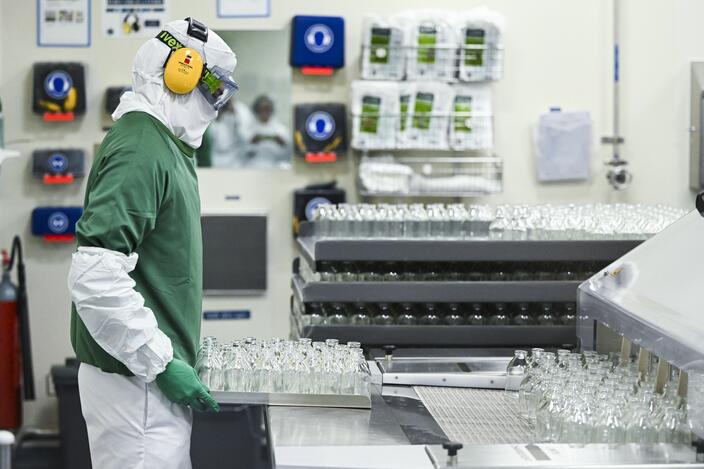Photo: © TASS/URA/Ekaterina Sychkov

Photo: © TASS/URA/Ekaterina Sychkov
On March 6, in the press center of the Izvestia Information Center, conference “Rare Diseases – Equal Rights”, dedicated to the International Day of Rare Diseases.
The experts spoke about programs to help people with orphan diseases, the problems that patients face, as well as progress in the diagnosis and treatment of such ailments. Details – in the material REN TV.
The problem of inequality among patients with rare diseases
In 2021, at the initiative of President Vladimir Putin, the Circle of Kindness was created in Russia, a fund to help children with severe chronic diseases. Thanks to this program, doctors have given life to thousands of little patients. However, many adults with rare diseases face severe drug shortages. This problem is called the “pyramid of inequality”.
President of the All-Russian Society of Hemophilia, member of the Council for the Disabled under the President of the Russian Federation Yuri Zhulev spoke about the main difficulties that the medical community faces.
“It is necessary to address the issue of federalization of drug provision. We are talking not only about drugs for children, but also for adults. “I would like to draw your attention to the fact that many will turn 18 only thanks to this support. If we support children, we must also take them into adulthood. Otherwise, a large number of regions will not be able to provide assistance. This means that all the efforts of doctors and the families of these patients will be canceled in a matter of months. Of course, there is inequality. Some regions can afford support in the form of expensive drug provision, and some cannot, “ the expert said.
Zhulev noted that rare (or orphan) diseases most often require complex treatment.
“How can this be done in the regions? It is necessary to develop uniform rules for providing specialized care to these cohorts of patients. The regions should have at least a minimum set for this. It is also important to ensure the routing of patients. In particular, the development of such a concept as a home hospital is being actively discussed. the patient, for objective reasons, cannot come to the medical institution on his own, then the doctors must come to him, – said the specialist.
Breakthrough in the diagnosis of rare diseases
Academician of the Russian Academy of Sciences, Doctor of Medical Sciences, President of the Federal State Budgetary Institution “National Medical Research Center for Pediatric Hematology, Oncology and Immunology named after Dmitry Rogachev” of the Ministry of Health of the Russian Federation Alexander Rumyantsev noted that our country is experiencing the so-called “orphan revolution”. The main achievement of science is the genetic diagnosis of rare diseases.

“The essence of it is that we are slowly moving towards personalized medicine. Thanks to modern technologies, we can establish the role of genetics in the development of a number of diseases,” said the expert. “We are moving at an incredible pace. This year, a neonatal screening program for 36 new diseases was launched. For example, for such a pathology as spinal muscular atrophy. The detection of such a patient will require the implementation of treatment tactics in the first three months of a child’s life. He can get a gene treatment once and that will be enough.” the professor remarked.
“Got to a new level”
Candidate of Medical Sciences, Ophthalmologist of the Department of Vitreoretinal Surgery and Eye Diabetes, FGAU “NMITs “MNTK” Eye Microsurgery” named after S.N. Fedorov” Anton Kolesnik said that modern medical technologies have reached a new level.
“For example, hereditary retinal dystrophy has long been considered an incurable pathology. Now we have learned how to treat such patients. In general, the system of care for patients with orphan pathology has made some progress. Thanks to the highly qualified specialists and the introduction of new advanced technologies, our center is famous both in Russia and abroad. We perform more than 300,000 operations a year, 85% of them are of the highest complexity category,” the expert said.
He added that genetic diseases have always been a stumbling block. However, thanks to innovations and gene replacement therapy, it has become possible to cure even such severe ailments.
Source: Ren
Henry Smith is a knowledgeable and experienced health journalist. He currently writes for 24 news breaker, where he provides readers with in-depth analysis and expert insights on a wide range of health-related topics. With a focus on evidence-based reporting and a passion for making complex health information accessible to a general audience, Henry’s work is highly respected in the industry.
